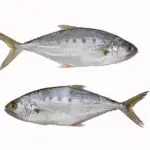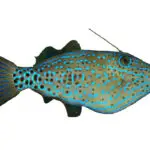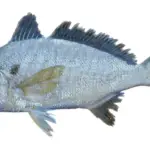Without a doubt, bluefish are an incredible sportfish and are popular around the world, but many anglers won’t eat them.
Rumor has it that bluefish are mushy, bloody, and fishy tasting.
So what’s the truth, are bluefish good to eat?
Table of Contents
- Are Bluefish Good to Eat?
- What Does Bluefish Taste Like?
- Why the Poor Reputation?
- Is Bluefish Good for You?
- Is Bluefish Safe to Eat?
- How to Clean Bluefish?
- Best Ways to Cook Bluefish
- Can Bluefish be Eaten Raw?
- Can Bluefish be Frozen?
- Final Thoughts
- Related Posts
Are Bluefish Good to Eat?
Despite their poor reputation, bluefish can be good to eat, particularly when prepared fresh and not frozen. The meat is moderately oily, with a strong fish flavor and soft texture.
Bluefish are large saltwater predators distributed around the world in tropical and subtropical oceans. Their diet consists mainly of baitfish and crustaceans, and adult bluefish are usually quite high on the food chain.
As a result, consuming large bluefish is not a great idea, because they often accumulate high levels of mercury, PCBs, and other chemicals.
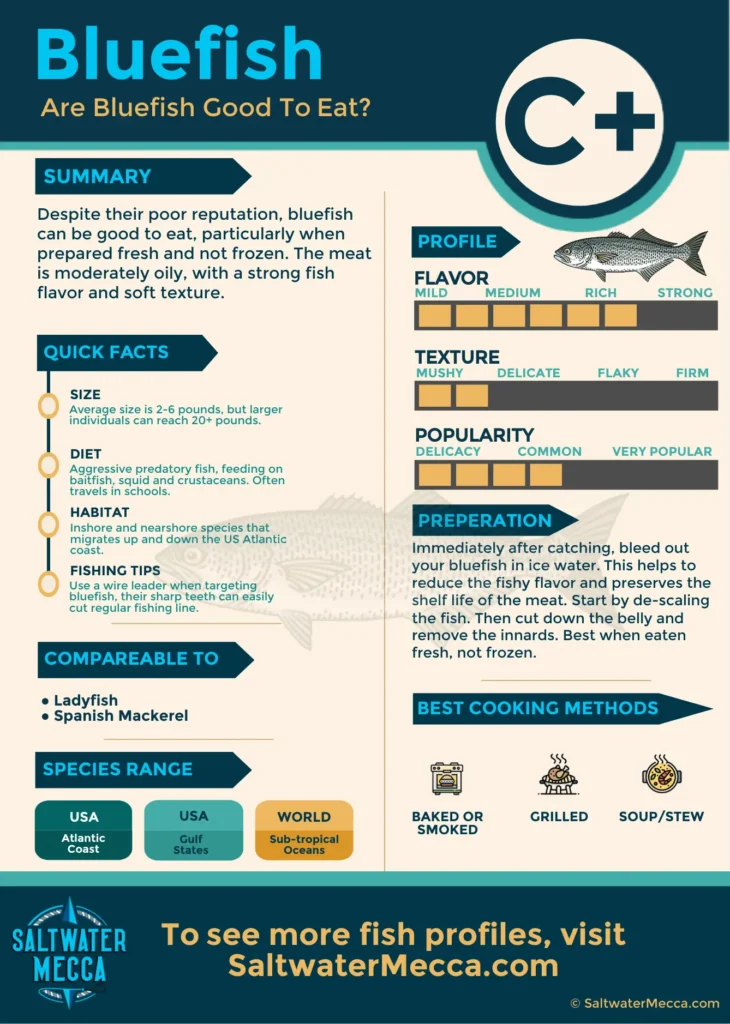
However, keep in mind, that this is true for almost all very large predatory fish including many widely sought-after fish species like bluefin tuna, king mackerel, and the very popular chilean sea bass.
That’s why, if you’re fishing for food, it is best to release the big ones and keep the smaller ones. Less than 20-inch bluefish are often called “Snapper blues” by the locals.
What Does Bluefish Taste Like?
Bluefish is an oily fish with soft flesh. They have a strong, fishier flavor than most fish. Most compare the taste to spanish mackerel. Larger bluefish can be overwhelmingly oily and fishy, so it’s better to put the big ones back and keep the smaller ones.
Why the Poor Reputation?
Many anglers are used to firm white-fleshed fish such as gag grouper, red snapper, haddock or cod, which is usually very mild in flavor and tastes like what you season it with. Bluefish is the opposite of this, so many people dislike the oily fishy taste.
People generally prefer to eat bigger fish than smaller fish, and large bluefish can be overwhelmingly oily and fishy.
Their poor reputation probably stems from people who dislike fishy-tasting fish or tried eating larger-sized bluefish.
Bluefish is best eaten fresh. It can have a poor shelf life if not properly bled and cleaned, so bluefish may have got a bad reputation from those who did not eat it fresh, and instead let it sit out in the sun.
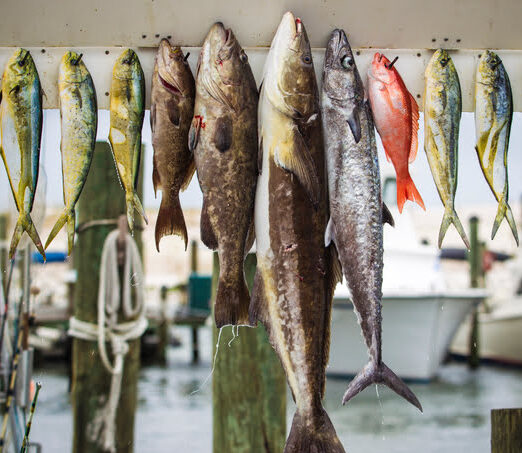
Do You Love Seafood?
Is Bluefish Good for You?
Oily fish, such as Bluefish are usually considered healthy fish to eat. Bluefish are a good source of protein and vitamins. They are also high in omega-3s and are a good source of magnesium and potassium.
Is Bluefish Safe to Eat?
Bluefish are generally safe to eat, but there are consumption advisories for bluefish. Large bluefish accumulate high levels of mercury, PCBs, and other chemicals, so it is advisable not to eat the big ones.
Environmental pollution is also a concern, so look for your local health and consumption advisories. Small bluefish are safe to eat, and they are healthy and tasty fish to eat.
How to Clean Bluefish?
Immediately after catching, bleed out your bluefish in ice water. This helps to reduce the fishy flavor and preserves the shelf life of the meat. Start by de-scaling the fish. Then cut down the belly and remove the innards. Removing the fins, head, and the tail is optional.
Snapper blues are best when prepared whole. If you prefer to filet your fish, you can filet bluefish too. It works better on the larger fish, but if your knife skills are good it can be done on the smaller fish too.
Be sure to remove the bloodline, which is the dark red section of meat that runs through the center of the fillet. This is where the strongest ‘fishy’ flavors come from (save it for fish chum!).
Best Ways to Cook Bluefish
Bluefish are best-cooked whole. Fried, baked, or grilled whole bluefish, topped with your favorite sauce or seasoning and served over rice is the best way to do it.
If you have a smoker, smoked bluefish will not disappoint. The smoker brings out the flavor of the bluefish even more than any other cooking style, and since its so oily it does not dry out!
Some anglers I know actually save there smaller bluefish, spanish mackerel and kingfish and smoke them all to make into a fish dip. Not a bad idea!
Can Bluefish be Eaten Raw?
There are mixed reports about eating raw bluefish. Bluefish can probably be eaten raw if prepared correctly to kill parasites, but it is not common.
Can Bluefish be Frozen?
If you want to freeze bluefish, its best to leave the skin on. This will help keep the fillet together and firm. Be sure to use a vacuum sealer, and pat dry before freezing.
But be warned: Due to their soft texture and high oil content, bluefish simply don’t freeze well and lose quality when thawed and cooked.
Final Thoughts
While there is no denying that bluefish are a ton of fun to catch, there is still some debate in the fishing community on whether or not these migrating fish are any good to eat.
In my opinion, bluefish are good to eat, but not great. The smaller fish, 12″-16″ in length are best, especially when eaten fresh, not frozen.
In any case, they are perfectly edible and if you like the taste of oily fish with a more delicate texture, give them a try!
Thanks for reading.

Growing up in Florida, I’ve been surrounded by saltwater my entire life…and I love sharing my passion with others.
To learn more about why I started Saltwater Mecca, visit the ABOUT page.
Thank you for reading this article. Browse around & have some fun!

